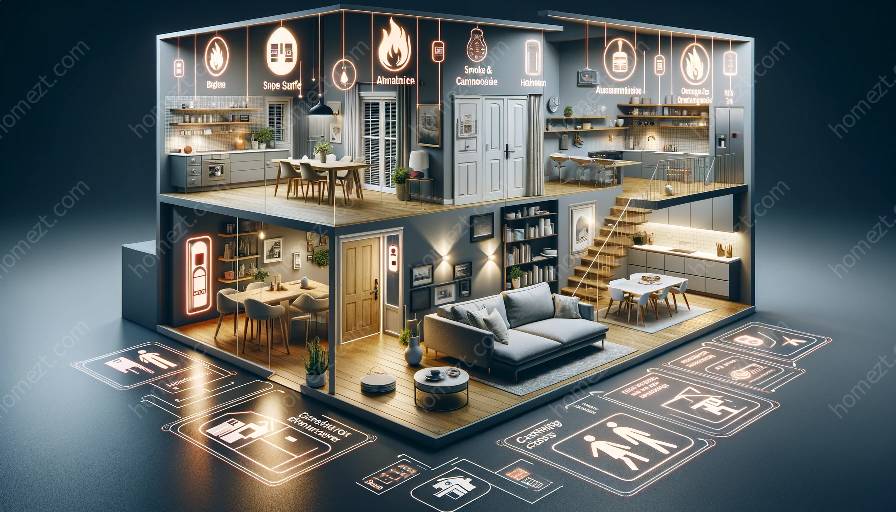When it comes to home safety, the kitchen can pose several hazards. By implementing effective kitchen safety tips, you can protect yourself and your loved ones from accidents and injuries. Furthermore, these tips align with essential home safety & security measures to create a secure and comfortable living environment.
Basic Kitchen Safety Tips
Safety begins with awareness and adherence to basic guidelines:
- Keep the cooking area clean and clutter-free: Cluttered surfaces and floors can contribute to accidents, so it's crucial to maintain clean and organized cooking spaces.
- Use caution near hot surfaces: Always be mindful of hot stovetops, ovens, and pans, and keep flammable items away from these areas.
- Handle sharp objects with care: Knives and other sharp utensils should be handled and stored safely to prevent accidental cuts.
- Be mindful of electrical appliances: Ensure that all electrical cords and plugs are in good condition, and keep them away from water sources to avoid electrical hazards.
- Practice proper food handling: Maintain good hygiene, wash hands frequently, and store food at proper temperatures to prevent foodborne illnesses.
Fire Safety in the Kitchen
Kitchens are susceptible to fire hazards, so it's crucial to prioritize fire safety:
- Install a smoke alarm in the kitchen: A smoke alarm can provide early detection of fires and alert occupants to evacuate safely.
- Keep a fire extinguisher nearby: In the event of a small kitchen fire, having a fire extinguisher within reach can help contain the situation before it escalates.
- Use caution with cooking oils and grease: Never leave cooking oils or grease unattended on a hot stove, as they can easily ignite and cause a fire.
Home Safety & Security Measures
In addition to kitchen-specific safety tips, maintaining a secure home environment involves broader safety and security measures:
- Secure windows and doors: Ensure that all entry points to your home are equipped with sturdy locks and, if needed, a home security system.
- Install adequate lighting: Well-lit surroundings can deter potential intruders and improve overall visibility around your home.
- Address potential hazards: Identify and rectify any safety hazards in your home, such as loose handrails, slippery floors, or unstable furniture.
Implementing Kitchen Safety and Home Security
By integrating kitchen safety tips with comprehensive home safety and security measures, you can create a secure and comfortable living space:
1. Create a home safety checklist: Develop a comprehensive checklist that addresses kitchen safety, fire safety, and broader home security measures. This will serve as a reference for ongoing safety efforts.
2. Educate household members: Ensure that all members of your household are aware of and adhere to safety guidelines. This includes teaching children about kitchen safety, fire evacuation plans, and home security protocols.
3. Regular safety inspections: Schedule regular inspections of the kitchen, smoke alarms, fire extinguishers, and overall home security features. This proactive approach can help identify and address potential safety concerns.
4. Stay informed about safety updates: Keep abreast of the latest safety recommendations and technologies, and implement relevant changes to enhance kitchen and home safety.
By conscientiously incorporating these tips and measures, you can maintain a secure and comfortable living environment for yourself and your loved ones.




